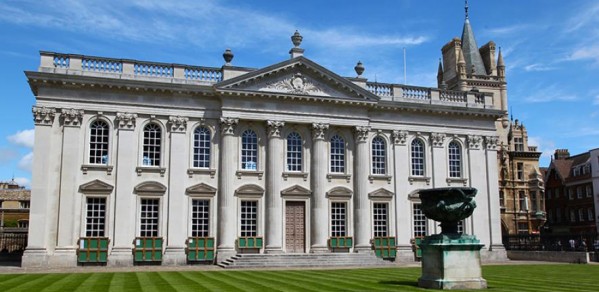
The University of Cambridge and Imperial College London are to launch a new joint venture to deliver admissions tests for science, engineering and mathematics-based degree courses. The tests, which will be delivered by global assessments leader, Pearson VUE, aim to improve the experience of students applying for highly competitive undergraduate courses while helping universities to fairly assess the skills of the brightest applicants.
We are delighted to be able to provide computer-based admissions tests from 2024.
Mike Nicholson, Director of Recruitment, Admissions and Participation at Cambridge
Cambridge and Imperial will provide two sets of tests. The Engineering and Science Admissions Test (ESAT) will be used for degree programmes in Engineering, Natural Sciences, Chemical Engineering and Biotechnology, and Veterinary Medicine at Cambridge, and Physics and most Engineering degrees at Imperial.
The Test of Mathematics for University Admission (TMUA) will be used for Economics and Computer Science degrees at Cambridge, and both the Economics, Finance and Data Science and Computing degrees at Imperial. A number of other UK universities will also use the TMUA for assessing applications for mathematically-based courses.
Pearson VUE is the certification and licensure arm of Pearson, the world’s leading learning company, providing assessment services to many institutions in the academic and admissions space. From October 2024 students will take a new computer based assessment at a Pearson VUE test centre, selecting from a global network of more than 5,500 locations in more than 180 countries.
Mike Nicholson, Director of Recruitment, Admissions and Participation at Cambridge, said: “We are delighted to be able to provide computer-based admissions tests from 2024, and in locations that take the burden off teachers and schools to act as test centres.”
Cambridge and Imperial will also be using the UCAT assessment for admission to their medical degrees from 2024, also provided through Pearson VUE, and Cambridge will continue to use the LNAT test for Law admissions.
Applicants will be required to pay an administration charge to take the tests, in line with other comparable institutions, but a fee waiver will be applied for UK-based applicants who are eligible for free school meals or who meet a number of other widening participation criteria.
Mike Nicholson added that “it is important that cost is not a barrier to participation, and the model we are using for the fee waivers has been successfully used for other admissions tests supported by Pearson”.
Lizzie Burrows, Director of Marketing, Recruitment and Admissions at Imperial, said: “The applicant experience is at the heart of our ambitions. With the number of applications expected to continue to rise over coming years, universities need to find ways to fairly select the best candidates while minimising the burden on our applicants. We hope that these tests, operating through Pearson VUE’s well established test centre network will encourage other universities to use the TMUA and ESAT as assessments and streamline the admissions process for students.”
To attract a wider range of applicants, the TMUA and ESAT will run test-sittings in mid-October 2024 and early January 2025 to reflect the two main deadlines for courses in the UCAS admissions process. Applicants to Cambridge must take the Autumn sitting.
Matthew Poyiadgi, Vice President EMEA and Asia at Pearson VUE, commented: “As academic settings and admissions programmes continue to evolve in an increasingly digital world, computer-based assessments drive greater efficiencies. We look forward to collaborating with Imperial and Cambridge on this transition and supporting applicants to these world-leading universities in proving their potential.’’
More information can be found online.
Written by Paul Seagrove. This article first appeared on the University of Cambridge website.

